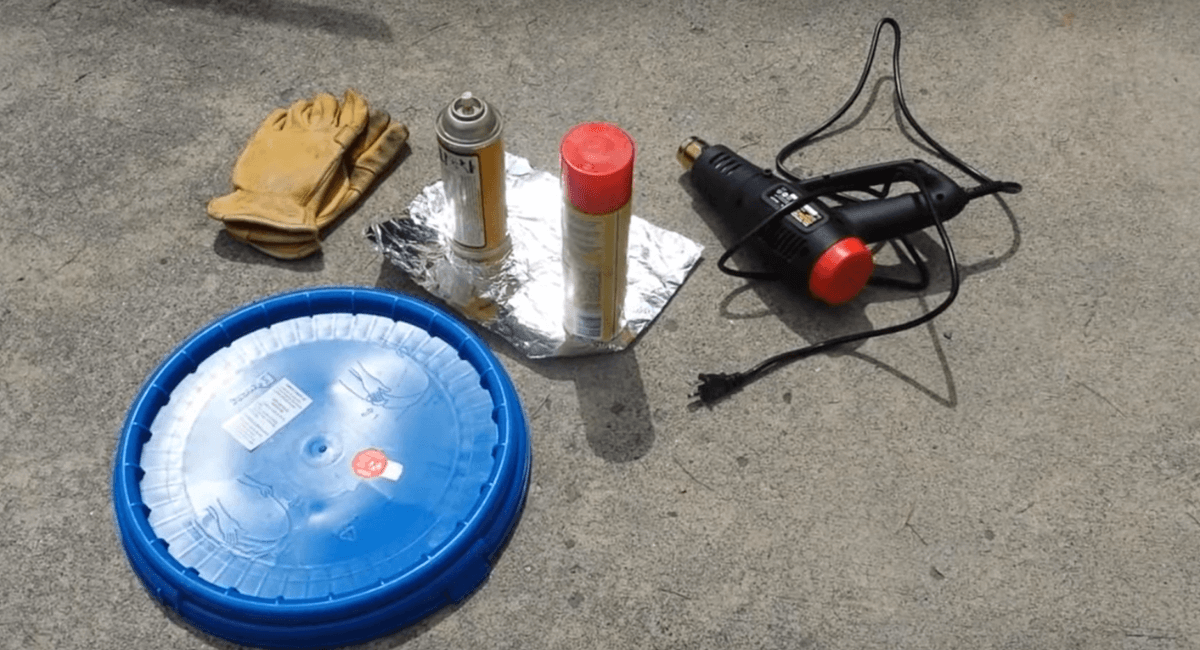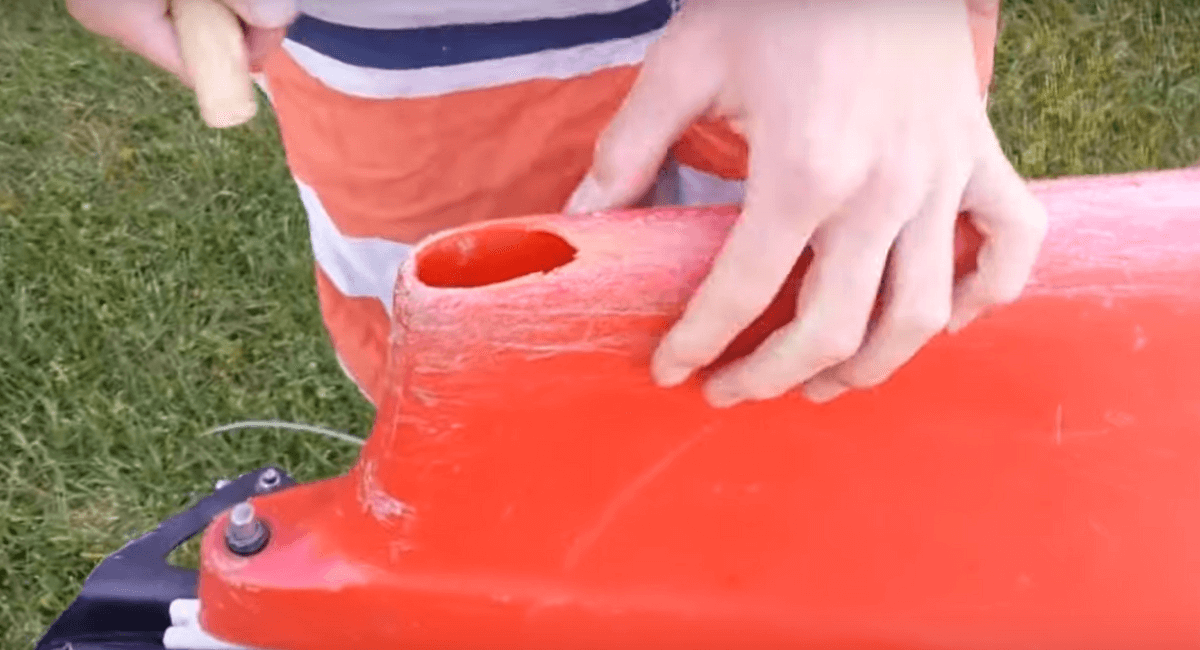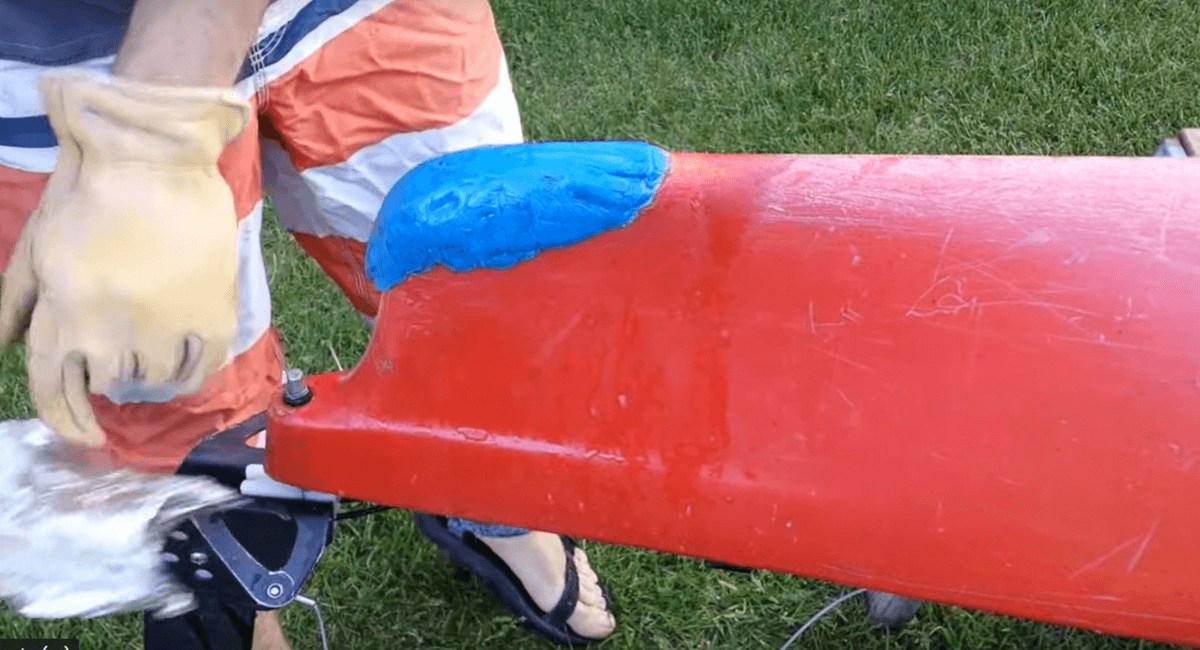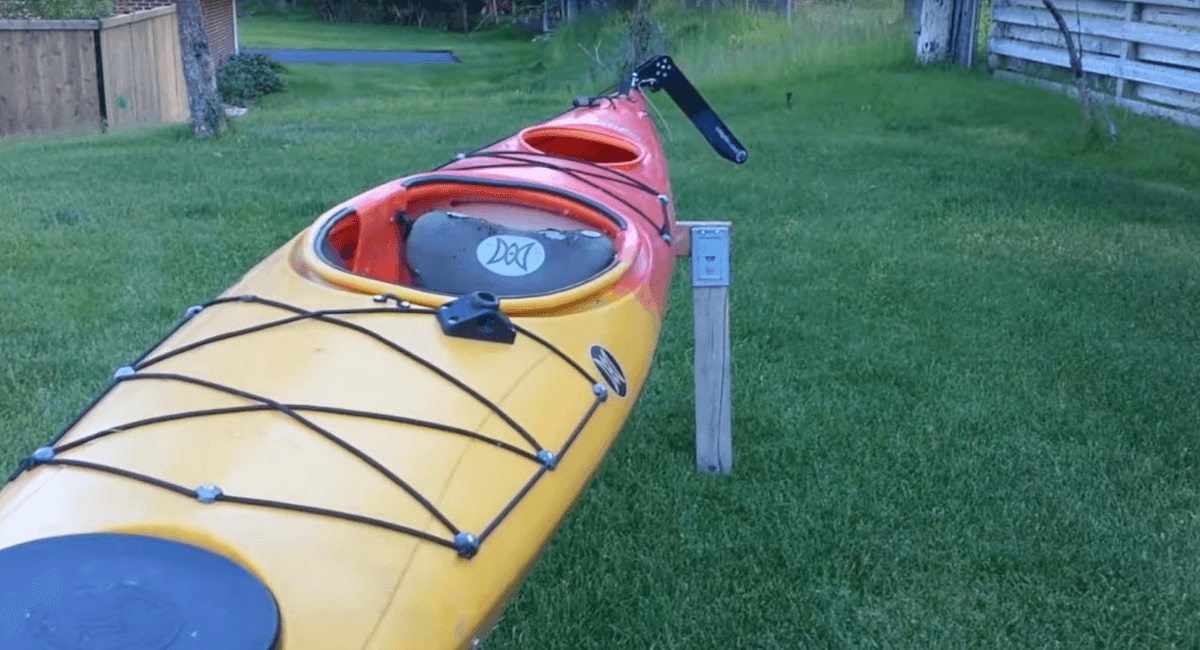To repair kayak plastic, use plastic welding, epoxy adhesive, or a repair kit specifically for plastics. Repairing kayak plastic can extend the lifespan of your kayak, saving you money on replacement costs and ensuring you can continue enjoying your water adventures for years to come.
A kayak is a versatile watercraft that allows you to explore various water bodies and enjoy nature up close. However, frequent use or accidental damage can lead to cracks or holes in the kayak’s plastic body. Repairing these damages promptly is essential to prevent further deterioration and maintain the kayak’s structural integrity.
By following the right repair techniques, you can easily fix minor damages on your kayak and get back on the water in no time. This article will guide you on how to repair kayak plastic effectively and efficiently, ensuring your kayak remains in top condition for your next paddling excursion.
Assessing The Damage
Before repairing your kayak plastic, it’s crucial to assess the extent of the damage. This step will help you determine the best course of action and ensure a successful repair.
Identifying The Damage
First, identify the areas of damage on your kayak. Look for scratches, cracks, or holes both inside and outside the hull. It’s important to thoroughly inspect the entire kayak to ensure all damage is identified.
Assessing The Severity
Once you’ve identified the damage, assess the severity of each issue. Determine whether the damage is superficial or structural. Superficial damage may only require minor repairs, while structural damage will need more extensive attention.
Gathering Materials And Tools

To effectively repair a plastic kayak, you will need to ensure you have the necessary materials and tools on hand. Let’s take a look at what you will need to get started:
Materials Needed
- Plastic Welding Kit: Essential for melting and rejoining the kayak’s plastic.
- Sandpaper (80 and 120 grit): Used for preparing the surface and smoothing out rough edges.
- Marine Epoxy: Helps to reinforce and seal cracks or holes.
- Fiberglass Cloth: Provides additional strength to the repair area.
- Acetone: Used for cleaning and degreasing the surface before repairs.
Tools Required
- Heat Gun: Needed to heat and soften the plastic for welding.
- Putty Knife: Helps to spread the melted plastic evenly during welding.
- Clamps or Vice Grips: Holds the repair in place while welding or drying.
- Disposable Gloves: Protects your hands from chemicals and hot surfaces.
- Protective Eyewear: Ensures safety while working with tools and chemicals.
Preparation
Cleaning The Area:
Use soap and water to clean the damaged section thoroughly. Ensure no dirt or debris remains.
Creating A Work Space:
Set up a clean and well-ventilated area to work on the kayak repair.
Repairing Minor Cracks And Scratches

Learn to repair minor cracks and scratches on kayak plastic using simple techniques. Restore your kayak with easy DIY methods for a smooth paddling experience. Fix imperfections quickly and efficiently to keep your kayak in top condition.
Repairing Minor Cracks and Scratches When it comes to repairing minor cracks and scratches on your kayak, it’s important to attend to them promptly to prevent further damage. Here are some simple steps to help you effectively repair minor cracks and scratches on your kayak’s plastic.
Filling Small Cracks
To begin filling small cracks in the kayak’s plastic, you can use a plastic welder or an appropriate adhesive specifically designed for the type of plastic your kayak is made of. Apply the adhesive to the crack, ensuring it fills the entire area. Make sure to follow the specific instructions provided with the adhesive for the best results.
Sanding And Smoothing
After filling the cracks, it is essential to sand and smooth the repaired area to ensure a seamless finish. Start by using fine-grit sandpaper to gently sand the repaired area, gradually smoothing out any rough edges or excess adhesive. Once the surface feels even and smooth to the touch, clean the area thoroughly to remove any dust or debris.
In addition to this, you might also consider using a plastic polish or wax to further enhance the appearance of the repaired area and provide additional protection. This will help maintain the kayak’s overall aesthetic while preventing future damage. Overall, repairing minor cracks and scratches on your kayak can be a relatively straightforward process, requiring only a few basic materials and some patience. By attending to these minor damages promptly, you can prolong the life of your kayak and ensure it remains in top condition for all your future water adventures.
Fixing Major Damage

Repairing major damage to your kayak’s plastic can seem intimidating, but with the right techniques, it can be a straightforward process that restores your kayak’s integrity. In this guide, we’ll explore two effective methods for fixing major damage: using plastic welding for large cracks and applying patches for holes.
Using Plastic Welding For Large Cracks
If you’re dealing with a large crack in your kayak’s plastic, plastic welding is an excellent solution. This method involves melting the kayak’s plastic material and fusing it, creating a strong and seamless bond. To effectively use plastic welding, follow these steps:
- Clean the damaged area thoroughly, removing any dirt or debris that could hinder the welding process.
- Preheat your plastic welding tool according to the manufacturer’s instructions. Different plastic materials require different temperatures.
- Hold the heated tool against both sides of the crack, applying gentle pressure to melt the plastic.
- Gradually move the tool along the crack, allowing the melted plastic to fuse together.
- Once the crack is fully welded, remove the plastic welding tool and let the kayak cool and solidify.
Plastic welding is a precise technique that requires practice and patience. By following these steps and taking your time, you can effectively repair large cracks in your kayak’s plastic.
Applying Patch For Holes
If your kayak has a hole in the plastic, applying a patch is an effective way to repair the damage. Here’s a step-by-step guide on how to apply a patch:
- Clean the area around the hole, ensuring it’s free from dirt, grease, or moisture.
- Cut a piece of plastic patch material that is slightly larger than the hole, ensuring it covers the damaged area completely.
- Apply a layer of adhesive designed for plastic, covering both the patch material and the damaged area.
- Press the patch firmly onto the hole, smoothing out any wrinkles or air bubbles.
- Allow the adhesive to dry and cure according to the manufacturer’s instructions.
Applying a patch is a simple and effective way to repair holes in your kayak’s plastic. Ensure you use the proper adhesive and give it enough time to cure to ensure a strong bond.
Applying Sealant And Finishing Touches
Once you have successfully repaired the damaged plastic on your kayak, it’s important to apply sealant to ensure the repair holds up against water and other environmental factors. Additionally, you may consider painting or refinishing the repaired area to give your kayak a fresh and polished look.
Sealing The Repaired Area
To effectively seal the repaired area, you will need a high-quality marine sealant that is specifically designed for plastic. These sealants create a strong bond and provide excellent waterproofing capabilities. Here are some steps to follow:
- Clean the area: Begin by cleaning the repaired area with soap and water to remove any dirt or debris. Allow it to dry completely.
- Apply the sealant: Squeeze a generous amount of the sealant onto a clean, disposable brush or spatula. Spread it evenly over the repaired area, ensuring all cracks and edges are covered.
- Smooth the sealant: Use a smooth, even motion to spread the sealant, ensuring there are no bubbles or gaps. You can use a small plastic spreader or your gloved finger.
- Let it cure: Allow the sealant to cure according to the manufacturer’s instructions. This typically takes a few hours, but it’s best to leave it overnight to ensure a strong bond.
Painting Or Refinishing
Painting or refinishing the repaired area not only enhances the aesthetics of your kayak but also provides an additional layer of protection. Here’s what you need to do:
- Prepare the surface: Ensure the sealed area is clean and dry before proceeding with painting or refinishing. Sanding the surface lightly can help the paint adhere better.
- Choose the right paint: Select a marine-grade paint that is suitable for plastic surfaces. These paints are designed to withstand harsh conditions and adhere well to plastic.
- Apply the paint: Use a brush or spray to apply thin, even coats of paint to the repaired area. Allow each coat to dry according to the paint manufacturer’s instructions before applying the next one.
- Finish off with a clear coat: For added protection and a glossy finish, consider applying a clear coat on top of the paint. This will help protect your kayak from UV damage and make it easier to clean in the future.
With your repaired area sealed and beautifully painted, your kayak will be ready for many more adventures on the water. Remember to follow the manufacturer’s instructions and take proper care of your kayak to ensure its longevity.
Testing The Repairs
Kayak plastic repairs should be thoroughly tested to ensure the integrity and durability of the repair. Testing the repairs is a critical step in ensuring that your kayak is safe and ready for use on the water. There are different tests you can perform to assess the effectiveness of your repairs.
Water Test
Before taking your kayak out on the water, it’s essential to conduct a water test to check and confirm the effectiveness of the repairs. Place your repaired kayak in water, ideally a bathtub or a pool, and carefully observe if any water seeps through the repaired areas. This test will help you identify any remaining leaks that need to be addressed before heading out onto the open water.
On-water Testing
Once your kayak passes the initial water test, it’s time for on-water testing. Take your kayak out for a short trip on a calm and safe body of water. Observe how the repairs hold up during paddling and regular usage. Pay attention to any signs of weakness or additional leakage. It’s essential to ensure that the repaired areas withstand the pressure and movement experienced during normal kayaking activities.
Maintenance Tips

Maintenance Tips are crucial for extending the lifespan of your kayak plastic. Proper care can prevent damage and ensure your kayak remains in top condition for many adventures to come.
Proper Storage
1. Store your kayak in a cool, dry place away from direct sunlight to prevent UV damage.
2. Keep your kayak off the ground using a rack or hanging system to avoid deformities.
3. Cover your kayak with a tarp or UV-resistant cover when not in use to shield it from outdoor elements.
Regular Inspection
1. Inspect your kayak before and after each use for any signs of cracks or damage.
2. Check for loose fittings or hardware that may need tightening to prevent further issues.
3. Clean your kayak regularly with mild soap and water to remove dirt and grime.
Frequently Asked Questions For How To Repair Kayak Plastic
How Can I Repair Cracks In My Kayak Plastic?
To repair cracks in kayak plastic, start by cleaning the area with soap and water. Then, apply a plastic repair adhesive and fill in the cracks. Smooth out the adhesive and let it dry completely. Sand down any rough edges and finish by applying a waterproof sealant.
What Tools Do I Need To Repair Kayak Plastic?
To repair kayak plastic, you will need the following tools: sandpaper (medium and fine grit), a plastic repair adhesive, a putty knife, a heat gun or hairdryer, a waterproof sealant, and a clean cloth. These tools will help you effectively repair and restore the plastic surface of your kayak.
Can I Repair A Hole In Kayak Plastic?
Yes, you can repair a hole in kayak plastic. Start by thoroughly cleaning the area around the hole. Apply a plastic repair adhesive or use a plastic welding technique to fill in the hole. Smooth out the adhesive or plastic, let it dry, and then sand and seal the area.
This will effectively repair the hole in your kayak plastic.
How Do I Prevent Future Damage To My Kayak Plastic?
To prevent future damage to your kayak plastic, avoid dragging your kayak over rough surfaces or hitting rocks and obstacles. Store your kayak in a cool and dry place, away from direct sunlight. Regularly inspect and maintain your kayak, checking for any cracks or damage and addressing them promptly.
Using protective pads and covers when transporting your kayak can also help prevent damage.
Conclusion
In closing, repairing kayak plastic is achievable with the right tools and techniques. By following the steps outlined in this guide, you can effectively mend cracks and holes to extend the life of your kayak. With proper care and maintenance, you can continue to enjoy your adventures on the water for years to come.
